Miaosen Wang
Imagen 3
Aug 13, 2024Abstract:We introduce Imagen 3, a latent diffusion model that generates high quality images from text prompts. We describe our quality and responsibility evaluations. Imagen 3 is preferred over other state-of-the-art (SOTA) models at the time of evaluation. In addition, we discuss issues around safety and representation, as well as methods we used to minimize the potential harm of our models.
ESG-FTSE: A corpus of news articles with ESG relevance labels and use cases
May 30, 2024



Abstract:We present ESG-FTSE, the first corpus comprised of news articles with Environmental, Social and Governance (ESG) relevance annotations. In recent years, investors and regulators have pushed ESG investing to the mainstream due to the urgency of climate change. This has led to the rise of ESG scores to evaluate an investment's credentials as socially responsible. While demand for ESG scores is high, their quality varies wildly. Quantitative techniques can be applied to improve ESG scores, thus, responsible investing. To contribute to resource building for ESG and financial text mining, we pioneer the ESG-FTSE corpus. We further present the first of its kind ESG annotation schema. It has three levels: a binary classification (relevant versus irrelevant news articles), ESG classification (ESG-related news articles), and target company. Both supervised and unsupervised learning experiments for ESG relevance detection were conducted to demonstrate that the corpus can be used in different settings to derive accurate ESG predictions. Keywords: corpus annotation, ESG labels, annotation schema, news article, natural language processing
Reinforced Self-Training (ReST) for Language Modeling
Aug 21, 2023Abstract:Reinforcement learning from human feedback (RLHF) can improve the quality of large language model's (LLM) outputs by aligning them with human preferences. We propose a simple algorithm for aligning LLMs with human preferences inspired by growing batch reinforcement learning (RL), which we call Reinforced Self-Training (ReST). Given an initial LLM policy, ReST produces a dataset by generating samples from the policy, which are then used to improve the LLM policy using offline RL algorithms. ReST is more efficient than typical online RLHF methods because the training dataset is produced offline, which allows data reuse. While ReST is a general approach applicable to all generative learning settings, we focus on its application to machine translation. Our results show that ReST can substantially improve translation quality, as measured by automated metrics and human evaluation on machine translation benchmarks in a compute and sample-efficient manner.
Optimizing Memory Mapping Using Deep Reinforcement Learning
May 11, 2023



Abstract:Resource scheduling and allocation is a critical component of many high impact systems ranging from congestion control to cloud computing. Finding more optimal solutions to these problems often has significant impact on resource and time savings, reducing device wear-and-tear, and even potentially improving carbon emissions. In this paper, we focus on a specific instance of a scheduling problem, namely the memory mapping problem that occurs during compilation of machine learning programs: That is, mapping tensors to different memory layers to optimize execution time. We introduce an approach for solving the memory mapping problem using Reinforcement Learning. RL is a solution paradigm well-suited for sequential decision making problems that are amenable to planning, and combinatorial search spaces with high-dimensional data inputs. We formulate the problem as a single-player game, which we call the mallocGame, such that high-reward trajectories of the game correspond to efficient memory mappings on the target hardware. We also introduce a Reinforcement Learning agent, mallocMuZero, and show that it is capable of playing this game to discover new and improved memory mapping solutions that lead to faster execution times on real ML workloads on ML accelerators. We compare the performance of mallocMuZero to the default solver used by the Accelerated Linear Algebra (XLA) compiler on a benchmark of realistic ML workloads. In addition, we show that mallocMuZero is capable of improving the execution time of the recently published AlphaTensor matrix multiplication model.
MuZero with Self-competition for Rate Control in VP9 Video Compression
Feb 14, 2022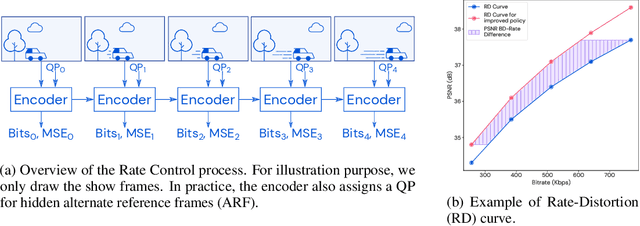

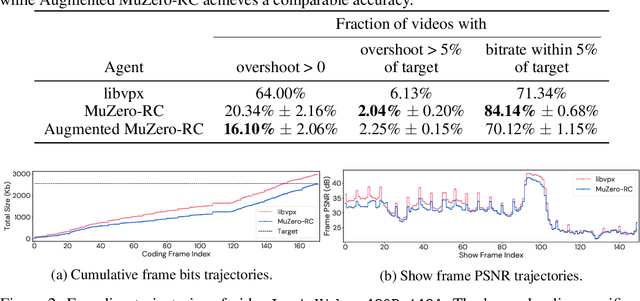
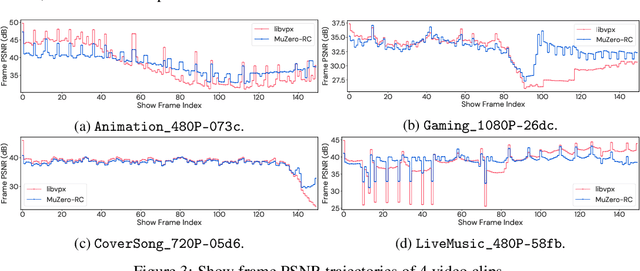
Abstract:Video streaming usage has seen a significant rise as entertainment, education, and business increasingly rely on online video. Optimizing video compression has the potential to increase access and quality of content to users, and reduce energy use and costs overall. In this paper, we present an application of the MuZero algorithm to the challenge of video compression. Specifically, we target the problem of learning a rate control policy to select the quantization parameters (QP) in the encoding process of libvpx, an open source VP9 video compression library widely used by popular video-on-demand (VOD) services. We treat this as a sequential decision making problem to maximize the video quality with an episodic constraint imposed by the target bitrate. Notably, we introduce a novel self-competition based reward mechanism to solve constrained RL with variable constraint satisfaction difficulty, which is challenging for existing constrained RL methods. We demonstrate that the MuZero-based rate control achieves an average 6.28% reduction in size of the compressed videos for the same delivered video quality level (measured as PSNR BD-rate) compared to libvpx's two-pass VBR rate control policy, while having better constraint satisfaction behavior.
More than Words: In-the-Wild Visually-Driven Prosody for Text-to-Speech
Nov 19, 2021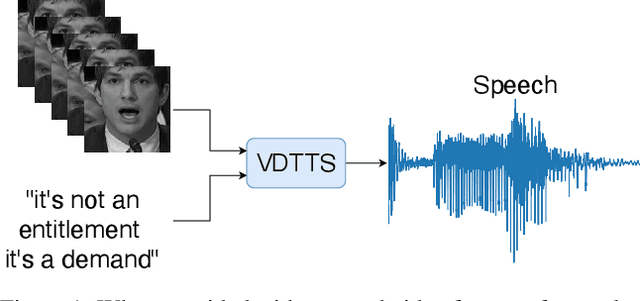



Abstract:In this paper we present VDTTS, a Visually-Driven Text-to-Speech model. Motivated by dubbing, VDTTS takes advantage of video frames as an additional input alongside text, and generates speech that matches the video signal. We demonstrate how this allows VDTTS to, unlike plain TTS models, generate speech that not only has prosodic variations like natural pauses and pitch, but is also synchronized to the input video. Experimentally, we show our model produces well synchronized outputs, approaching the video-speech synchronization quality of the ground-truth, on several challenging benchmarks including "in-the-wild" content from VoxCeleb2. We encourage the reader to view the demo videos demonstrating video-speech synchronization, robustness to speaker ID swapping, and prosody.
Neural Rate Control for Video Encoding using Imitation Learning
Dec 09, 2020
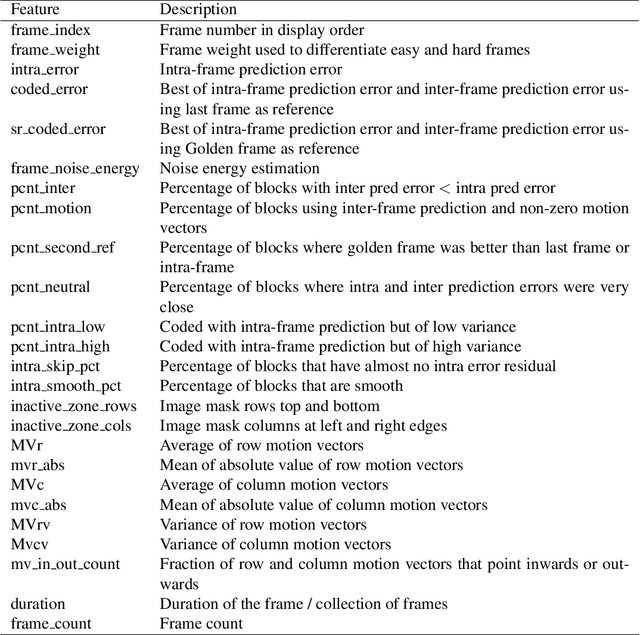


Abstract:In modern video encoders, rate control is a critical component and has been heavily engineered. It decides how many bits to spend to encode each frame, in order to optimize the rate-distortion trade-off over all video frames. This is a challenging constrained planning problem because of the complex dependency among decisions for different video frames and the bitrate constraint defined at the end of the episode. We formulate the rate control problem as a Partially Observable Markov Decision Process (POMDP), and apply imitation learning to learn a neural rate control policy. We demonstrate that by learning from optimal video encoding trajectories obtained through evolution strategies, our learned policy achieves better encoding efficiency and has minimal constraint violation. In addition to imitating the optimal actions, we find that additional auxiliary losses, data augmentation/refinement and inference-time policy improvements are critical for learning a good rate control policy. We evaluate the learned policy against the rate control policy in libvpx, a widely adopted open source VP9 codec library, in the two-pass variable bitrate (VBR) mode. We show that over a diverse set of real-world videos, our learned policy achieves 8.5% median bitrate reduction without sacrificing video quality.
Large-scale multilingual audio visual dubbing
Nov 06, 2020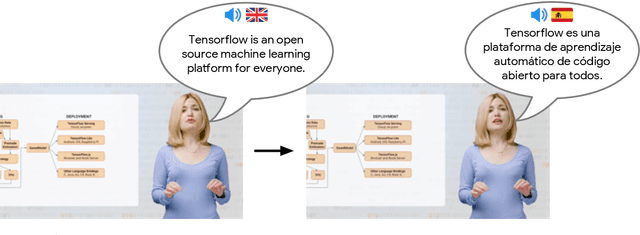
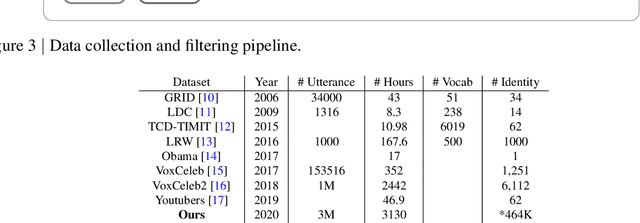
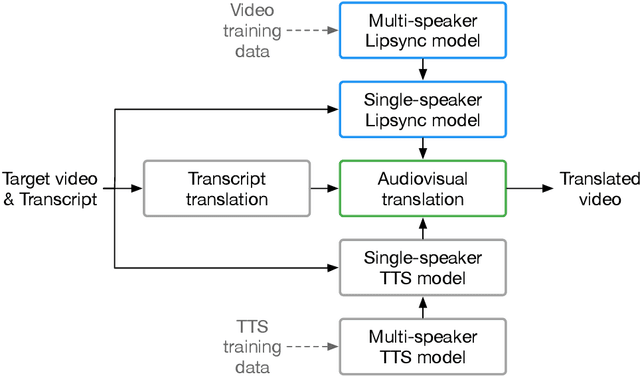
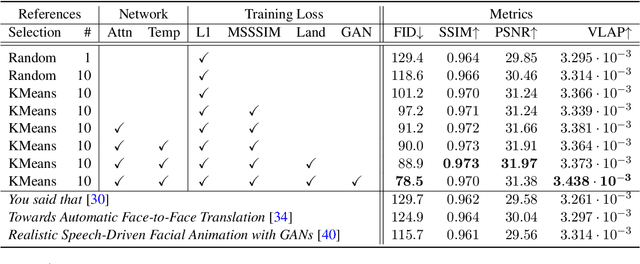
Abstract:We describe a system for large-scale audiovisual translation and dubbing, which translates videos from one language to another. The source language's speech content is transcribed to text, translated, and automatically synthesized into target language speech using the original speaker's voice. The visual content is translated by synthesizing lip movements for the speaker to match the translated audio, creating a seamless audiovisual experience in the target language. The audio and visual translation subsystems each contain a large-scale generic synthesis model trained on thousands of hours of data in the corresponding domain. These generic models are fine-tuned to a specific speaker before translation, either using an auxiliary corpus of data from the target speaker, or using the video to be translated itself as the input to the fine-tuning process. This report gives an architectural overview of the full system, as well as an in-depth discussion of the video dubbing component. The role of the audio and text components in relation to the full system is outlined, but their design is not discussed in detail. Translated and dubbed demo videos generated using our system can be viewed at https://www.youtube.com/playlist?list=PLSi232j2ZA6_1Exhof5vndzyfbxAhhEs5
How to Ask Better Questions? A Large-Scale Multi-Domain Dataset for Rewriting Ill-Formed Questions
Nov 21, 2019



Abstract:We present a large-scale dataset for the task of rewriting an ill-formed natural language question to a well-formed one. Our multi-domain question rewriting MQR dataset is constructed from human contributed Stack Exchange question edit histories. The dataset contains 427,719 question pairs which come from 303 domains. We provide human annotations for a subset of the dataset as a quality estimate. When moving from ill-formed to well-formed questions, the question quality improves by an average of 45 points across three aspects. We train sequence-to-sequence neural models on the constructed dataset and obtain an improvement of 13.2% in BLEU-4 over baseline methods built from other data resources. We release the MQR dataset to encourage research on the problem of question rewriting.
Adversarial Training for Community Question Answer Selection Based on Multi-scale Matching
Apr 22, 2018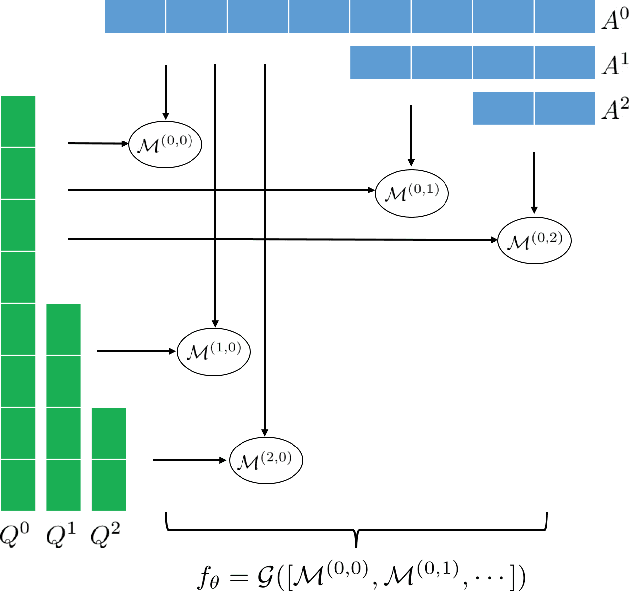
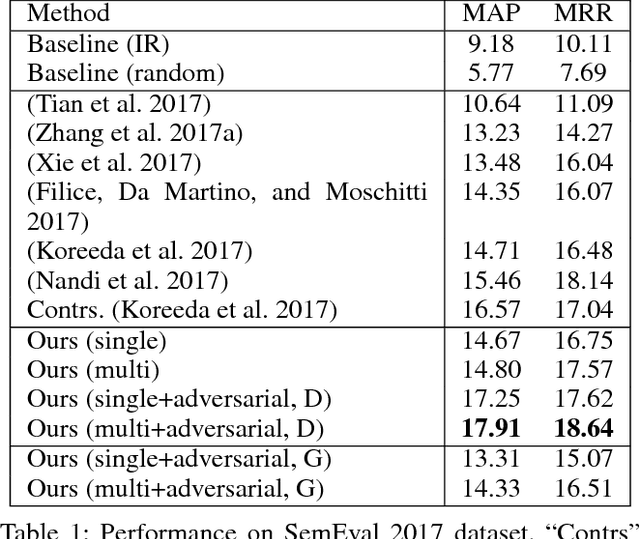
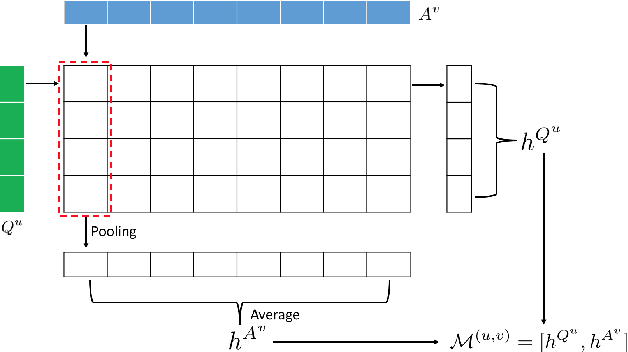
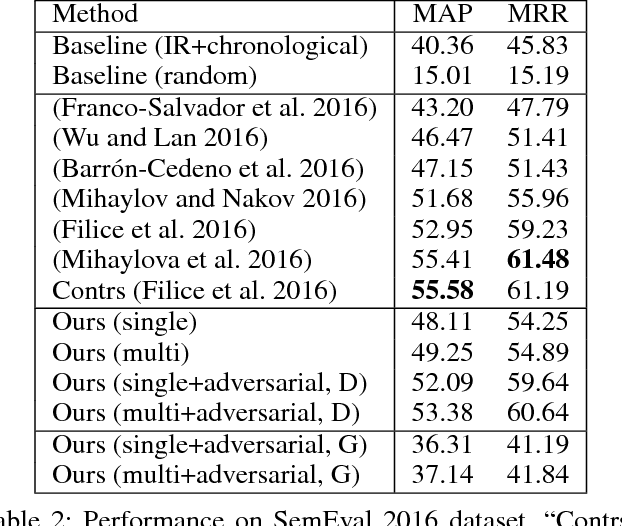
Abstract:Community-based question answering (CQA) websites represent an important source of information. As a result, the problem of matching the most valuable answers to their corresponding questions has become an increasingly popular research topic. We frame this task as a binary (relevant/irrelevant) classification problem, and propose a Multi-scale Matching model that inspects the correlation between words and ngrams (word-to-ngrams) of different levels of granularity. This is in addition to word-to-word correlations which are used in most prior work. In this way, our model is able to capture rich context information conveyed in ngrams, therefore can better differentiate good answers from bad ones. Furthermore, we present an adversarial training framework to iteratively generate challenging negative samples to fool the proposed classification model. This is completely different from previous methods, where negative samples are uniformly sampled from the dataset during training process. The proposed method is evaluated on SemEval 2017 and Yahoo Answer dataset and achieves state-of-the-art performance.
 Add to Chrome
Add to Chrome Add to Firefox
Add to Firefox Add to Edge
Add to Edge